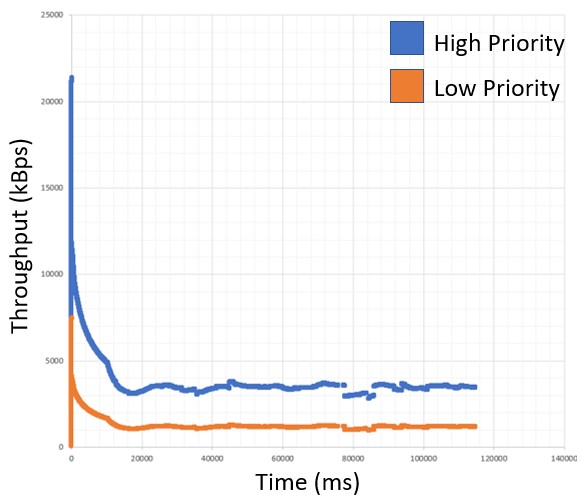Background
The purpose of this project is to address some of the universal challenges encountered by networked nomadic software applications that travel across many access points (AP) potentially over many communication link types and varying signal strengths. This investigation focused on two known problem areas — space and terrestrial mobile networks. While the terrestrial mobile network is an established, well known concept, the Space Mobile Network (SMN) is a proposed next-generation solution to an ever-expanding fleet of space assets that increasingly rely on communication between themselves and with ground stations.
To address these challenges in a generalized way, a network scheduler could be developed to dynamically track and react to changes in network capabilities, queuing packets in a way most effective in the current environment, and re-queuing these packets as the environment changes to make use of improved capabilities or gracefully degrade in the case of poor network performance. In the most extreme cases, delay/disruption tolerant network (DTN) techniques may be applied, storing packets for extended periods when no route is available and transmitting when it becomes possible, as is often the case in space networks.
Approach
To address these challenges in a generalized way across disciplines (e.g., terrestrial and space mobile networks) our approach was to place an intelligent network scheduler between the software application and the network interface. This scheduler, informed by domain specific knowledge passed in by the application, then tracked network capabilities in near real time and (re)schedule these packets as network capabilities change. To evaluate the efficacy of this scheduler, ns-3 (an industry-standard discrete-event network simulator) was used to run simulations in representative network environments both with and without this scheduler.
Accomplishments
The project team devised methods to collect near real time network health metrics using a combination of open source libraries and in-house algorithms, and a hybrid ns-3/physical network simulation testbed was developed to simulate the fluctuating network capabilities of satellites as they orbit the Earth with each other and with ground stations. Using these capabilities, the team was able to evaluate the effects of dynamic queuing policies on overall network performance.

Figure 1: The results from an experiment simulating the maximum capacity load within the network.
